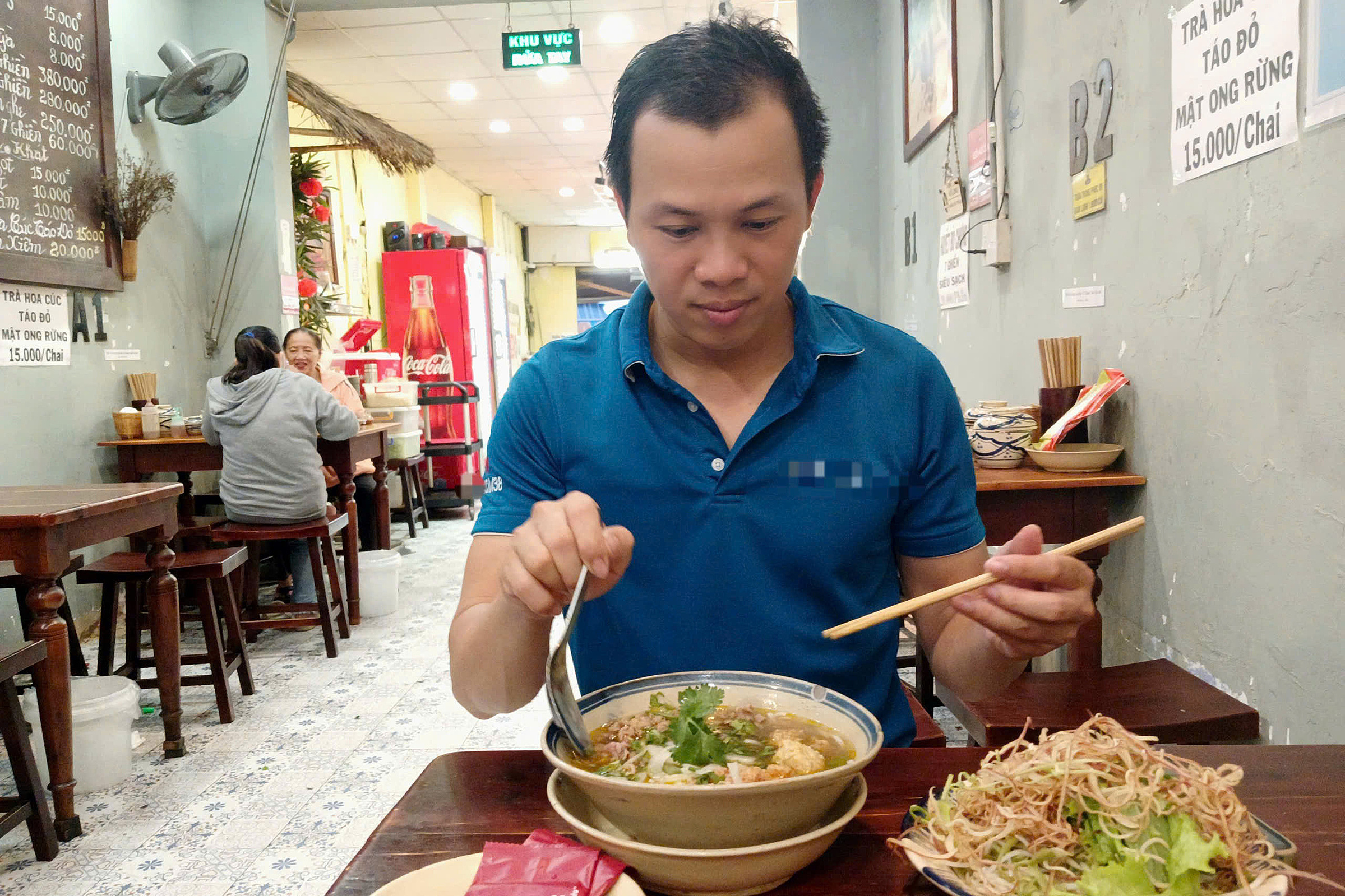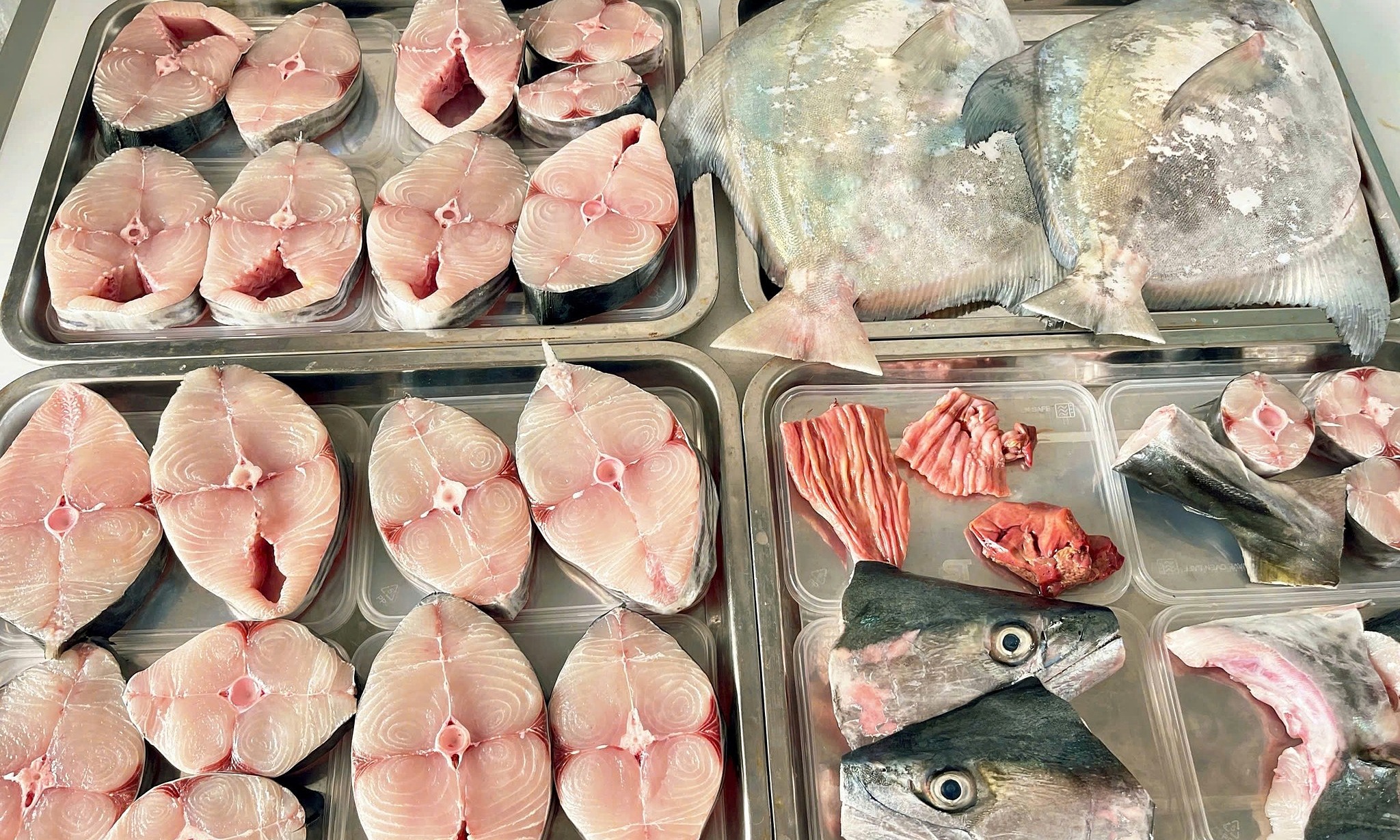Restaurant owners in Ho Chi Minh City are grappling with rising costs, forcing them to increase menu prices. Hoang, who owns a lunch eatery on Phan Dang Luu Street in Duc Nhuan ward, said meal prices have risen by 5,000-10,000 VND. "The prices of fish, shrimp, squid, chicken, and pork remain high. If I sell through delivery apps, I also have to pay a 4.5% service fee and up to a 25% discount. It's difficult to stay afloat without raising prices," he explained.
At a beef noodle soup stall on Le Van Tho Street in An Hoi Tay ward, a regular bowl has gone from 40,000 to 45,000 VND, while the premium bowl with beef shank and crab cakes has increased from 50,000 to 55,000 VND. The owner shared that they chose to raise prices to maintain quality rather than reduce ingredients.
Hang, an office worker in Ben Nghe ward, has also noticed a 5,000 VND increase across several dishes like beef noodle soup, hu tieu (a type of noodle soup), chicken pho, and broken rice at her regular eateries. "It's almost impossible to find pho for 35,000 VND around the city center anymore," she said.
Even street food like banh mi (Vietnamese sandwich) has become more expensive. A shop on Le Duc Tho Street in An Hoi Dong ward now sells a pork patty and egg banh mi for 22,000 VND and a mixed banh mi for 25,000 VND, up from 15,000-20,000 VND previously. The long-standing Bay Ho shop on Huynh Khuong Ninh Street in Sai Gon ward also raised prices on 1/6, from 22,000 VND to 24,000 VND (including VAT) per banh mi. This is the second price adjustment in 2025, following an earlier increase from 20,000 to 22,000 VND at the beginning of the year.
 |
A bowl of beef shank and crab cake noodle soup has increased by 5,000 VND to 55,000 VND at a stall on Le Van Tho Street, An Hoi Tay ward. Photo: Thi Ha |
A bowl of beef shank and crab cake noodle soup has increased by 5,000 VND to 55,000 VND at a stall on Le Van Tho Street, An Hoi Tay ward. Photo: Thi Ha
Beyond food costs, rising electricity and water prices are also putting pressure on businesses. In the past six months, average retail electricity prices have been adjusted twice and now stand at 2,050 VND per kWh, a roughly 4.5% increase compared to the end of last year. Water prices in Ho Chi Minh City have also increased by 400-600 VND per cubic meter since January, depending on usage.
Many fresh food prices remain high in the market. A survey of traditional markets in Ho Chi Minh City shows that giant grouper has increased by 30% to 450,000 VND per kg, while tiger prawns and whiteleg shrimp have increased by 5%, ranging from 160,000-280,000 VND per kg. Farmed fish like tra, snakehead, and red tilapia are 15% more expensive than the same period last year, currently retailing at 90,000-110,000 VND per kg.
A report by the Ministry of Agriculture and Environment shows that the price of commercial tra fish at the pond – the raw material for processing – has reached 28,000-33,000 VND per kg, a 20-26% increase compared to July of last year. This price is expected to rise further in the second half of the year as demand for export materials and purchasing power increase.
Pork prices are following a similar trend. Although live hog prices have cooled compared to two months ago, the price of cut pork in the market remains high, making it difficult for eateries to reduce costs.
 |
Seafood prices have increased by 20-30% compared to the same period last year. Photo: Le Lan |
Seafood prices have increased by 20-30% compared to the same period last year. Photo: Le Lan
The impact of rising prices is evident in the Consumer Price Index (CPI). According to the General Statistics Office, the July CPI increased by 0.11% compared to the previous month and 3.19% compared to the same period last year. Over the first seven months, the CPI increased by 3.26%, with core inflation at 3.18%. The main factors driving the CPI increase are food prices, dining out, and utility costs.
In addition to prices, new tax regulations are also adding pressure. Since 1/6, more than 37,000 food and beverage, hotel, and retail businesses with annual revenue exceeding 1 billion VND are required to use electronic invoices directly connected to the tax authorities. Sellers must also declare and pay VAT and personal income tax if their revenue exceeds 100 million VND annually. Many eatery owners say these regulations further erode their already thin profit margins.
According to shop owners, even if food prices reverse, it's unlikely that dining-out prices will return to previous levels. However, if the supply of pork and seafood becomes more abundant from Quarter IV, the rate of increase may slow down.
Thi Ha












